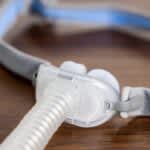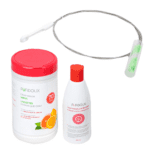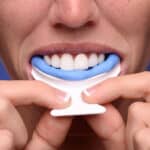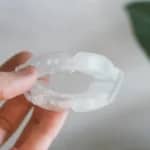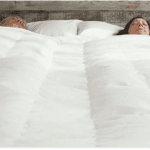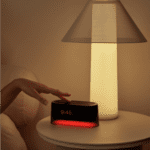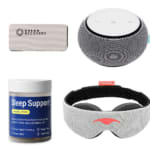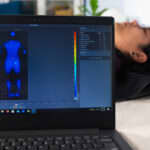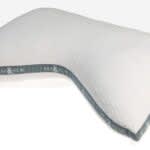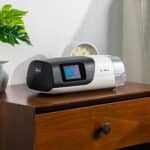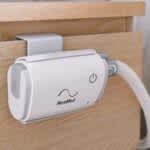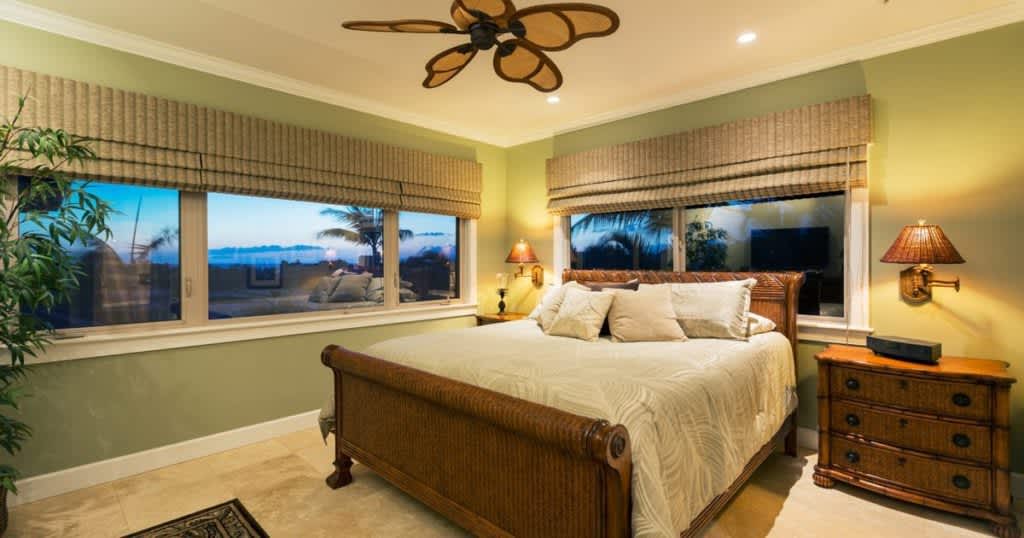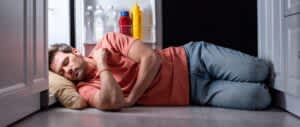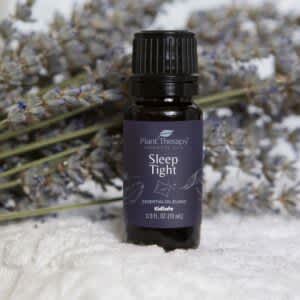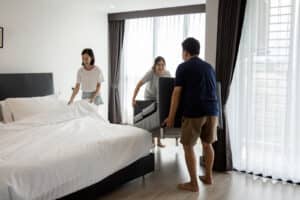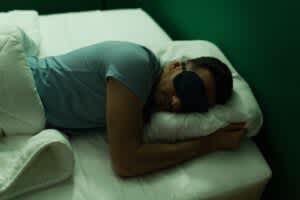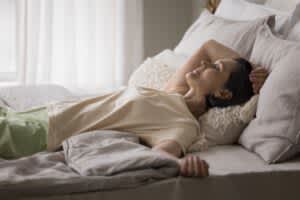The rising sun is sometimes what prompts people to get up in the morning, while growing darkness might coincide with sleepiness in the evening. This is dictated by the body’s sleep-wake cycle, which primarily responds to light as a cue for when to be awake and when to sleep.
However, our light exposure doesn’t just follow the daily patterns of the sun. In addition to natural light exposure, we also constantly encounter artificial types of light from lamps and electronic devices.
Exposure to various light sources during the day can help you feel alert. But turning on bright lights, watching TV, and viewing a phone or tablet in the hours leading up to bedtime can keep you up at night and inhibit sleep. If you experience sleep issues, it is important to be mindful of the types of light you are surrounded by during the day and in the hours before bedtime.
Light and Your Sleep-Wake Cycle
Light is a critical influence in the sleep-wake cycle. The sleep-wake cycle is one of our circadian rhythms, or the sets of physical patterns that follow a 24-hour cycle. Other circadian rhythms include body temperature and appetite.
You have an internal clock in your brain that regulates circadian rhythms in response to external influences, including light. The internal clock responds to light by communicating with other parts of the brain, setting in motion certain physical processes that increase alertness. It also responds to darkness by initiating processes that increase sleepiness.
One of the processes that is affected by the sleep-wake cycle is the production of melatonin. Melatonin is a hormone produced by the brain to promote sleepiness. Exposure to light during the day contributes to wakefulness by directly suppressing the production of melatonin. However, in the evening hours, darkness leads to increased melatonin production which helps us fall asleep.
Natural Light vs. Artificial Light
Humans and other organisms have evolved an internal clock that’s in sync with the 24-hour natural sunlight cycle present on earth. Before the creation of light-emitting technology, the human sleep-wake cycle revolved around sunrise and sunset.
However, artificial light from lamps and blue light from electronic devices like televisions and cell phones have significantly affected this dynamic.
What Is Blue Light?
Blue light is a type of light emitted by LED lights and electronic devices including televisions, phones, tablets, and computers. Blue light is a high-frequency wavelength that induces similar effects to sunlight. Blue light is a high-frequency wavelength that induces similar effects to sunlight.
Exposure to blue light lowers melatonin production. Decreasing melatonin levels during the day can help you feel more alert and less sleepy. But exposure to blue light in the evening can disrupt healthy sleep-wake cycles by reducing melatonin levels when it is time for sleep.

Is It Bad To Sleep With the Lights On?
Most people sleep better in a dark environment. Since household LED lights emit blue light, which suppresses melatonin secretion, keeping bright lamps and other lights on through the night can negatively affect your ability to fall asleep, remain asleep, and sleep for an extended period of time. Recent studies have further emphasized the importance of using light strategically throughout the day, including decreased exposure at night, for healthier sleep.
Your internal clock responds to indicators of light and darkness to prepare for when to be awake and when to be asleep. Keeping the lights on while you’re trying to sleep can confuse your internal clock and cause you to wake up or lead to lower quality sleep. Some research suggests that, even when your eyes are closed, light exposure can suppress melatonin.
However, red light does not affect your sleep-wake cycle, making a dim red light acceptable for use as a nightlight during sleep. Other types of light that have limited effect on sleep are yellow and orange light.
Does Blue Light Keep You Awake?
Exposure to blue light has been shown to suppress melatonin production and make it more difficult to fall asleep. For this reason, experts recommend avoiding the use of electronics for at least 30 minutes before bed and when you wake up in the middle of the night.
How Does Light Affect Sleep in Children?
Research suggests that light can also significantly affect children’s sleep patterns. In fact, children are more sensitive to light exposure than adults. The use of interactive, light-emitting electronic devices in particular near bedtime can negatively affect sleep length and quality in children.
However, keeping a small, distant night light in your child’s room is not likely to interfere with sleep, especially if a yellow, orange or red light-emitting bulb is used.
Light and Circadian Rhythm Disorders
Circadian rhythm disorders involve a misalignment between a person’s environment and their sleep-wake cycle, resulting in sleep disruption. Symptoms of circadian rhythm disorders include insomnia and excessive sleepiness during the day.
Shift Work Disorder
Shift work disorders are disturbances in the sleep-wake cycle that occur as a result of working schedules that fall outside of daytime hours. Shift work disorder makes it difficult to get enough hours of sleep and to get high quality sleep.
For example, health care workers often work overnight shifts, requiring them to work during the night and sleep during the day. Positions in the service industry, security, and other fields also require working shifts that don’t align with the natural light cycle.
Jet Lag
Jet lag refers to travel-related sleep-wake cycle disturbances in which a person’s circadian rhythm temporarily becomes out of sync with their local time zone.
The effects of jet lag, including daytime sleepiness, trouble falling asleep, and irritability, can worsen as an individual passes through multiple time zones. Traveling from west to east appears to affect travelers more severely than from east to west, due to losing hours in the daytime they would normally be awake.
Non-24-Hour Sleep-Wake Rhythm Disorder
Non-24-hour sleep-wake rhythm disorder occurs when someone has a sleep-wake cycle that is longer than 24 hours, leaving them in a state of further and further delayed waking and sleeping schedules each day. Though sighted individuals can develop the condition, this syndrome appears more commonly in people with total blindness.
Because their sleep-wake cycle is continually shifting later, people with this condition experience periods of being able to sleep at night and be awake during the day as well as periods of being awake at night and sleeping during the day.
Bright Light Therapy for Sleep Disorders
Bright light therapy aims to reset disrupted sleep-wake cycles and help individuals adjust to a predictable sleep schedule. Medical professionals may recommend this type of treatment for insomnia and circadian rhythm sleep disorders.
Bright light therapy involves sitting close to and facing toward a bright light box each morning for anywhere from 10 to 60 minutes. You can do other activities such as working or reading while sitting by the bright light.
Speak with your doctor if you are curious about whether bright light therapy may be helpful for you.
Optimize Your Light Exposure for Sleep
There are several steps you can take to regulate your light exposure and improve your sleep quality.
- Get natural light during the day: Getting light during the day helps to align your sleep-wake cycle with the rising and setting of the sun and can improve the quality of your sleep. Balancing both natural and artificial light exposure is one of the most important factors in optimizing your schedule for sleep.
- Put away electronics before bed: Stop using electronic devices at least 30 to 60 minutes before going to bed. If you must use your phone or laptop leading up to bedtime, use it in another room and avoid using it in bed.
- Dim the lights: Keeping light levels dim for two hours before sleeping can help you fall asleep more easily. Some people find that installing special blue light-free lightbulbs in the bedroom helps them avoid blue light in the hours leading up to bedtime.
- Accommodate night shifts: If your job requires shift work, use blackout curtains to help you sleep and expose yourself to bright lights when you need to be awake for work. Try wearing blue light-blocking glasses between when you finish your shift and when you go to bed to encourage melatonin production.
- Talk with a doctor: If you’re struggling to maintain a regular sleep schedule due to work or other issues, check in with a health care provider who can help determine whether additional testing or treatment may help.
References
The Sleep Doctor Forum: Real Experiences, Real Connections
Continue the discussion on the Sleep Doctor Forum. Connect with experts and fellow forum members on CPAP, sleep apnea, and all things sleep. A priceless resource that’s free to join.



